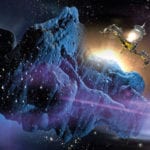 Weird Stuff
Weird Stuff  Weird Stuff
Weird Stuff  Animals
Animals 10 Inspiring Tales of Horses Being Human
 Mysteries
Mysteries Top 10 Haunting Facts About the Ghost Ship MV Alta
 History
History 10 Surprising Stories About the Texas Rangers
 Humans
Humans 10 Philosophers Who Were Driven Mad by Their Own Theories
 Miscellaneous
Miscellaneous 10 Video-Game-Worthy Weapons and Armors from History
 Weird Stuff
Weird Stuff 10 Psychics Who Accurately Predicted Wartime Events
 The Arts
The Arts 10 Pieces of Art Inspired by a Broken Heart
 Health
Health 10 Science Fiction-Sounding New Medical Treatments
 History
History 10 Surprising Facts About the Father of Submarine Warfare
 Weird Stuff
Weird Stuff 10 Times Real Laws Were Based on Bizarre Hypotheticals
 Animals
Animals 10 Inspiring Tales of Horses Being Human
 Mysteries
Mysteries Top 10 Haunting Facts About the Ghost Ship MV Alta
Who's Behind Listverse?

Jamie Frater
Head Editor
Jamie founded Listverse due to an insatiable desire to share fascinating, obscure, and bizarre facts. He has been a guest speaker on numerous national radio and television stations and is a five time published author.
More About Us History
History 10 Surprising Stories About the Texas Rangers
 Humans
Humans 10 Philosophers Who Were Driven Mad by Their Own Theories
 Miscellaneous
Miscellaneous 10 Video-Game-Worthy Weapons and Armors from History
 Weird Stuff
Weird Stuff 10 Psychics Who Accurately Predicted Wartime Events
 The Arts
The Arts 10 Pieces of Art Inspired by a Broken Heart
 Health
Health 10 Science Fiction-Sounding New Medical Treatments
 History
History 10 Surprising Facts About the Father of Submarine Warfare
10 Spectacular Satellite Collisions
Ever since Sputnik first reached its orbit back in 1957, man has been on a never-ending quest to learn more about our local universe. However, in the past 50 years, we’ve littered it more than we’ve studied it. Currently, there are over 500,000 pieces of “space debris” orbiting the Earth. Some of are meteoroids, but the majority are left over bits from humanity’s many space endeavors.
While you wouldn’t think that this would matter too much, since space, after all, is a big place, it is more of an issue than you might realize. The latest calculations estimate that there are over 20,000 man-made objects at least the size of a baseball hurtling around the Earth at over 28,000 kilometers per hours (17,500 mph). You don’t need to be a scientist to know that such speeds could cause a lot of damage. Sadly, this has happened on more than one occasion, and there are numerous types of satellite-on-satellite fender-benders.
10 Soyuz TM-17 Crashes Into Mir
1994
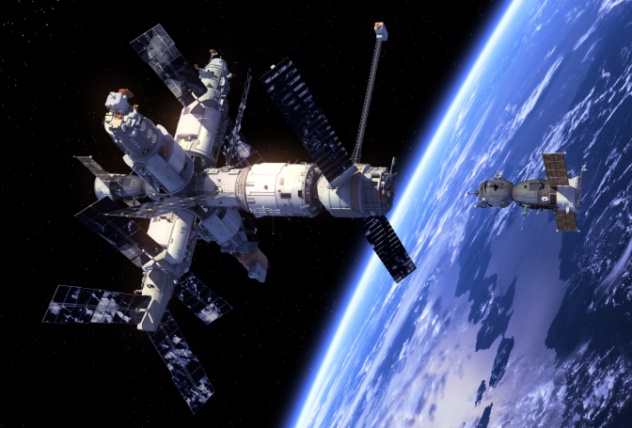
In 1994, during a return mission from the Russian space station Mir to Earth, a simple Soviet Soyuz TM ferry spacecraft, Soyuz TM-17, collided with Mir a few minutes after liftoff. Photographs were being taken as part of an ongoing inspection of the space station, so as the cosmonauts were leaving for home, the Russian equivalent of ground control, TsUP, ordered them to take some photos of the docking deck.
A few minutes into the task, cosmonaut Vasily Tsibliyev complained that that the ship was handling “sluggishly,” as TM-17 was drifting too close to one of Mir’s solar arrays. Shortly afterward, the controllers at TsUP saw TM-17’s external camera shake violently, with fellow on-board cosmonaut Aleksandr Serebrov reporting that the spacecraft had indeed hit Mir. Communications between ground control, Mir, and TM-17 were instantly lost but were luckily restored after several minutes.
Although Soyuz TM-17 struck Mir two times in as many seconds, there was no serious damage. The cause of the crash has been blamed on a switch error within the left motion control lever in the descent module. Thankfully, Tsibliyev was able to control TM-17 with the right lever and steered the ship clear of Mir’s solar arrays, antennas, and docking ports, averting a collision that could have been a massive disaster.
9 Progress M-34 Hits Mir
1997
The age-old proverb preaches that “Lightning never strikes the same place twice,” but Vasily Tsibliyev is living proof of the contrary. Mir had only two satellite collisions during its operations, and Tsibliyev was in control during both of them.
In the 1990s, Russia was trying to perfect a remote-control docking system to replace an expensive automated procedure provided by Ukraine. To test the new system, the supply vessel Progress M-34 was un-docked from Mir on June 24, 1997, so the vessel could be re-docked manually. However, this proved to be far more difficult than previously thought, as at the time of the test, M-34 was temporarily camouflaged against Earth’s cloudy background, causing the module to veer off-course. For some reason, the brakes failed to sufficiently decelerate M-34, and the vessel collided, quite abruptly, with Mir’s Spektr module.
Though the crash wasn’t anything like a Michael Bay mega explosion, Mir sustained severe damage to one of its solar panels and radiators, as well as a puncture in the hull of the Spektr module, causing it to depressurize. After the impact, Mir’s crew heard a hissing sound, and their ears popped, key features of depressurization. As a consequence, Spektr had to be permanently sealed off, and the electricity drawn from Spektr’s solar panels was cut off, causing Mir to lose power and start to drift in free flight. Thankfully, electricity was restored, and the space station received no catastrophic damage, though it took several weeks to resume normal operations on Mir.
On July 2, 1997, after Progress M-34 was released from Mir’s docking station, the destructive cargo vessel burned up in the Earth’s atmosphere during re-entry over the Pacific Ocean, which must have been quite a cathartic experience for the cosmonauts to watch.
8 The Hypervelocity Collision
2009
On February 10, 2009, Iridium 33, a commercial communications satellite, and Cosmos-2251, an obsolete Russian military satellite, collided 800 kilometers (500 mi) above the Taymyr Peninsula in Siberia. At the time, both satellites were flying at a speed of 24,480 kilometers per hour (15,211 mph) and had a combined weight of 1,500 kilograms (3,300 lb). The colossal momentum of the crash totally obliterated both satellites.
The Hypervelocity Collision (so-called because the velocities involved can be measured in kilometers per second) sent more than 2,000 fragments, roughly 10–15 centimeters (4–6 in) in size, into orbit around the Earth. The debris still poses a massive hazard to the International Space Station (ISS), as the fragments are orbiting in the same region. Though the ISS has suffered no direct hits from the 2009 collision, it has had to perform evasive maneuvers to avoid debris.
The remains of the crash are still orbiting Earth to this day and are still a serious threat. Thankfully, the orbits of most of the fragments are decaying, meaning that the debris will eventually burn up in the atmosphere. As of January 2014, roughly 25 percent of the debris had burned up. Though devastating, one positive outcome of the collision is that many questions are being raised regarding defunct space junk and how it can be removed from orbit before further destructive events occur.
7 The Satellite Crash Pit, AKA The Moon
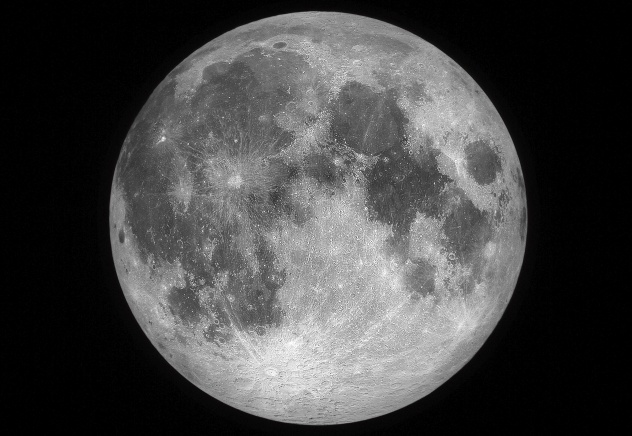
The Moon is a natural satellite, so collisions between it and artificial satellites still count for this list. So far, humanity as a whole has sent 74 probes and manned ships to the Moon, 51 of which have crashed into its white, rocky surface. Note that 19 of these crash cases were intentional, such as in the Apollo missions, where the S-IVB rockets were dropped onto the lunar surface to measure its seismic activities.
Most of the satellites and probes that have pummeled the lunar surface are owned by the US. In most cases, this is simply because they had completed their mission and were no longer needed, so they were turned off and left to fall into the Moon. The USSR had a very hard time getting their probes to land correctly, with half of the Luna mission probes smacking straight into the Moon’s surface.
Whether the crashes were intentional or not, humanity has dumped 128,141 kilograms (282,500 lb) worth of probes onto the Moon over the last 50 years, with several more lunar endeavors planned over the next few decades. Here’s hoping that they actually land this time round.
6 The Collision That Blitzed BLITS
2013
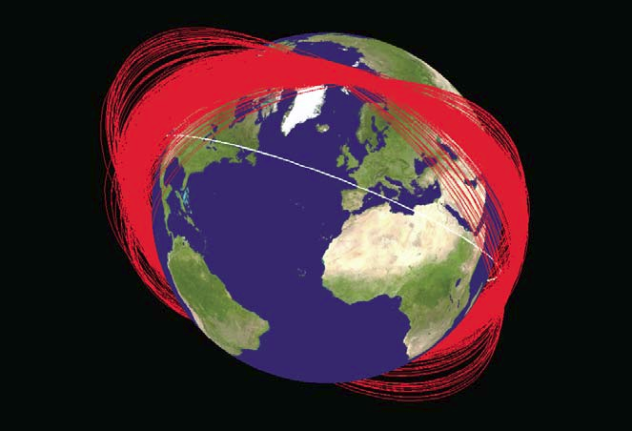
In 2009, a retroreflector satellite called BLITS (Ball Lens In The Space) was put into orbit. Made out of several types of glass, all with varying refractive indexes, this little, 8-kilogram (18 lb) satellite was planned to have a five-year mission, supporting scientific studies in geophysics and geodynamics, as well as acting as a testbed for satellite laser ranging applications.
Four years into its mission, in 2013, Russian scientists noticed an instant, 120-meter (400 ft) drop in BLITS’s altitude. Its spin period also increased in frequency from 0.18–0.48 hertz. BLITS also ceased to respond to the laser ranging signals, which prompted the question, “Had something hit BLITS?” After analyzing the orbital tracking data, it turned out that there was one object within 3 kilometers (1.8 mi) of BLITS, travelling with a relative velocity of 34,920 kilometers per hours (21,700 mph) at the time of impact. So what was the culprit? A piece of Chinese space junk.
In 2007, as part of an anti-satellite missile test, China destroyed one of its own 750-kilogram (1,653 lb) weather satellites, Fengyun 1C (FY-1C). The test was a success, but the explosion sent 2,317 traceable fragments hurtling into a variety of orbital planes around Earth, with an estimated 15,000 untraceable fragments also sent flying into orbit. The debris caused by this one test has been nothing short of a menace since the explosion, posing a constant threat to low-orbiting spacecraft. Some of them, including the ISS, have even had to perform evasive maneuvers on more than one occasion.
It was only a matter of time before the FY-1C debris damaged a satellite, with BLITS being the first recorded. The inoperative BLITS is still in orbit, floating around the Earth as yet another bit of space junk that may one day knock a future satellite off-course.
5 Russian Space Debris Wreaks Havoc
2013
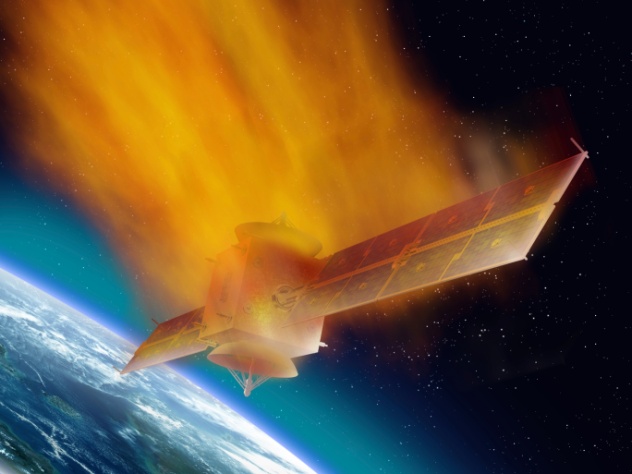
In 1985, Russia launched Cosmos 1666, an electronic jamming satellite, into space on the back of a rocket called Tsyklon-3, which is similar in design to the Saturn rockets used by NASA. The launch was a success, and Cosmos 1666 was put into orbit. Unfortunately, the last stage rocket of Tsyklon-3 also remained floating around the Earth. After 28 years in orbit, a cloud of debris had shrouded the Tsyklon-3 rocket, making it even more hazardous than before.
In 2013, over the Indian Ocean, a plucky little Ecuadorian satellite named Pegaso met its ill fate. Though Pegaso didn’t directly collide with Tsyklon-3, the cloud of debris hit the tiny satellite, knocking its antennae out of orientation, causing it to spin wildly. Pegaso wasn’t damaged during the crash, but due to the misalignment of its antennae, the change in its orbit, and rapid spinning, it could no longer receive transmissions or send commands. Three months after the crash, the Ecuadorian Civilian Space Agency (EXA) declared Pegaso lost and ended its mission.
Tsyklon-3 can didn’t just take out Ecuador’s Pegaso, but it also knocked out its companion, Argentinean satellite CubeBug-1, which begs the question: How many more satellites will this giant, floating trash heap destroy?
4 Faulty Navigation System Causes A Satellite Collision
2005
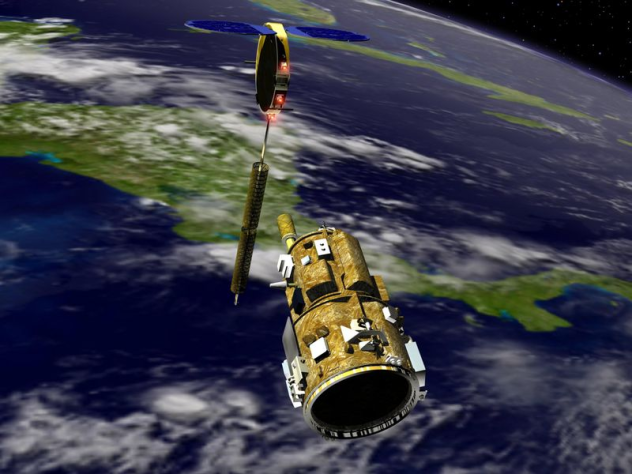
Demonstration for Autonomous Rendezvous Technology (DART) was designed by NASA to engage in complex maneuvers, in pretty tight spots, without any human interaction. If successful, DART could be used to undergo tricky maintenance tasks on existing satellites, such as the Hubble Telescope. Sadly, though, this proved to be a bit too much to ask of the automated spacecraft, as during its test flights it bumped into its rendezvous target, a communications satellite called MUBLCOM, pushing it into a slightly higher orbit.
Though there was a crash during the testing of DART, it established that more precautions and perfections are needed when it comes to totally automated spacecrafts. Thankfully, both satellites were fine following the collision, even if they were a tad bruised, and could successfully enter their retirement phases. Currently, both satellites are in low orbits, where they will pose no risk to any other spacecraft. They will slowly descend over the next 25 years so they can burn up in the Earth’s atmosphere.
3 Cerise Is Damaged By Its Own Launch Rocket
1996
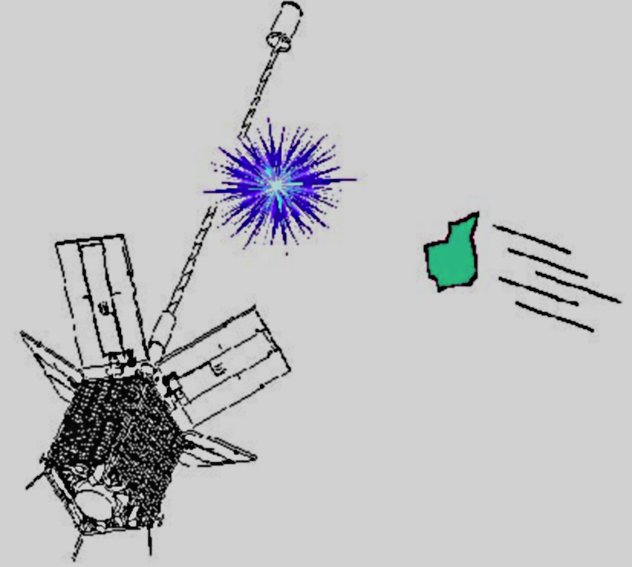
Named after the French word for “cherry,” Cerise was a 50-kilogram (110 lb) military reconnaissance satellite designed to intercept high frequency (HF) radio signals for the French secret service. On July 7, 1995, the little eavesdropper was placed successfully into orbit by an Ariane-4 rocket, a three-stage vehicle that was heavily used by the European Space Agency.
Roughly one year into its spy mission, Cerise was knocked out of its orbit, dropping in altitude, and started to tumble head-over-heels. Though this had never been seen before, it was fairly obvious what had happened: Cerise had been struck by something.
Using the USAF Space Command’s COMBO (Computation Of Miss Between Orbits) program, NASA was able to determine that Cerise had been hit by a fragment from a previous mission. This was the first witnessed case where two man-made objects had ever collided in space. After further analysis, it turned out that the fragment came from an old Ariane-1 rocket which had broken up into over 500 traceable pieces, meaning that Cerise was hit by an older version of the very rocket that launched it into space.
The collision badly damaged Cerise, snapping a 3-meter (10 ft) chunk off of the 6-meter (20 ft) gravity-gradient stabilization boom that protruded from the probe. Cerise’s performance was badly compromised, but it was still working normally, carrying on its mission via ground control. Engineers pulled off a spectacular feat and managed to reprogram Cerise’s on-board computers, using on-board electromagnets to reposition the satellite, allowing it to carry on snooping for many years afterward.
2 USA 193
2008
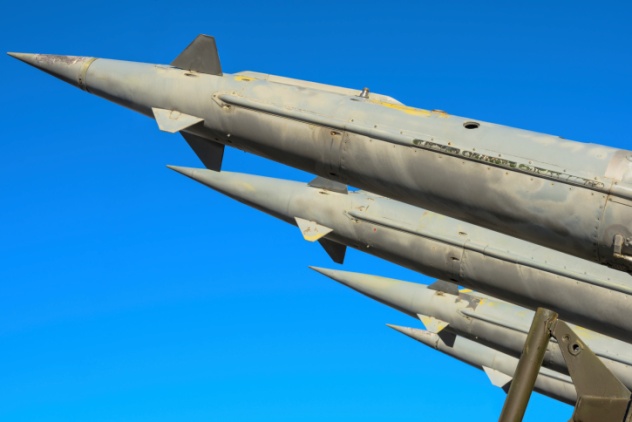
In 2006, just moments after the top-secret, classified satellite USA 193 successfully entered its orbit, communications between it and ground control fell silent. Normally, this wouldn’t be a big deal. Yes, it would be annoying, but eventually the satellite would burn up in the atmosphere. However, USA-193 was no ordinary satellite. Weighing a whopping 2,300 kilograms (5,000 lb) and based upon the Delta II payload dimensions, USA 193 is also thought to be 4.5 meters (15 ft) long by 2.5 meters (8 ft) wide.
Again, this shouldn’t be such an issue, but because USA 193 failed right at the start of the mission, it had a full tank of fuel, which happened to be 454 kilograms (1,000 lb) of toxic hydrazine, which was predicted to survive re-entry while contained in the fuel tank. Obviously, USA 193 couldn’t be allowed to enter the atmosphere of its own volition, lest it spray its toxic contents all over innocent people. Something had to ensure that this could never happen, and Operation Burnt Frost was created.
General James Cartwright confirmed that the US Navy planned to fire a $10 million SM-3 missile, destroying the satellite before it re-entered Earth’s atmosphere. The toxic fuel which would either be shot into space or burned up in the atmosphere. Since the satellite was in a low orbit, it was predicted that most of the debris would immediately enter the Earth’s atmosphere and burn up within 48 hours, with the remaining fragments re-entering after no more than 40 days.
In 2008, nearly two years after the initial launch, USA 193 was successfully destroyed at an altitude of 247 kilometers (153 mi) above the Pacific Ocean. It was blown into 174 pieces, which were catalogued and tracked by the US military. Most of the debris fell to Earth and burned up after a few months of orbit, a bit longer than predicted. Some pieces were thrown into much higher orbits than expected but have all been accounted for, and the last piece of USA 193 re-entered the atmosphere in October 2009.
Thankfully, none of the debris from the obliterated USA 193 caused any collisions as far as we know. The only issue caused was a slight delay in the launch of a different National Reconnaissance Office satellite, NRO L-28, which was merely “a precautionary measure.”
1 Galileo’s Suicide Run
2003
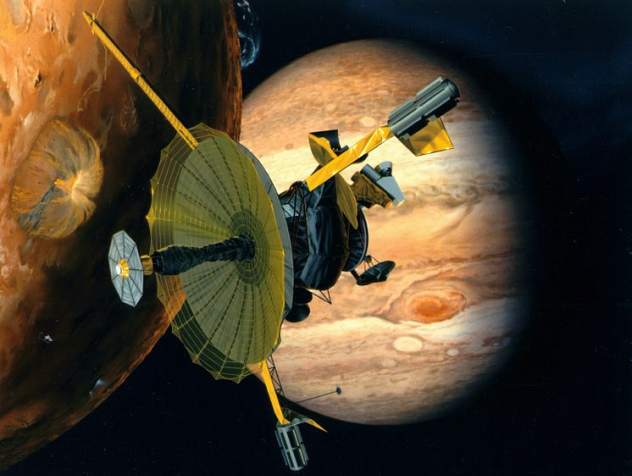
Galileo is by far one of the most important satellites to have ever been created, immeasurably expanding our knowledge of the solar system and providing some of the most breathtaking images of Jupiter and its moons. Launched in 1989, Galileo slingshotted past Venus and Earth, taking photos of them both along the way, before ending up at Jupiter almost five years later.
This little explorer earned many firsts: Galileo was the first to fly past an asteroid, the first to discover a moon orbiting an asteroid, the first and only probe to directly observe a comet colliding with a planet, the first to measure Jupiter’s atmosphere, the first to discover the intense volcanism of Io, and the first to find evidence of subsurface saltwater on the Galilean moons of Europa, Ganymede, and Callisto.
A growing concern among astronomers was that one day, Galileo may have ended up colliding with one of Jupiter’s many moons, possibly contaminating them. Given how potentially habitable moons such as Europa are, something had to be done. Galileo simply didn’t have enough fuel to return to Earth, and the only option to avoid contamination of the Jovian system, and the solar system as a whole, was to destroy Galileo by sending it into the very planet it had studied for well over a decade.
So, on September 21, 2003, after 14 years in space and eight years in the Jovian system and the darkness of the Jupiter evening, Galileo descended into the intense pressure of the mammoth gas giant at 7:00 PM GMT with zero chance of survival. While it was a tragedy to let Galileo go, it was the noble thing to do. Godspeed, Galileo.
My name is Andy. I like to write things. I write reviews for DeadPress.co.uk and 7BitArcade.com, as well as dabble in a bit of satire over at Undergroundmgzn.com. I prefer gigs over clubs, whiskey over wine, and Christina Hendricks over any woman ever made, ever.
